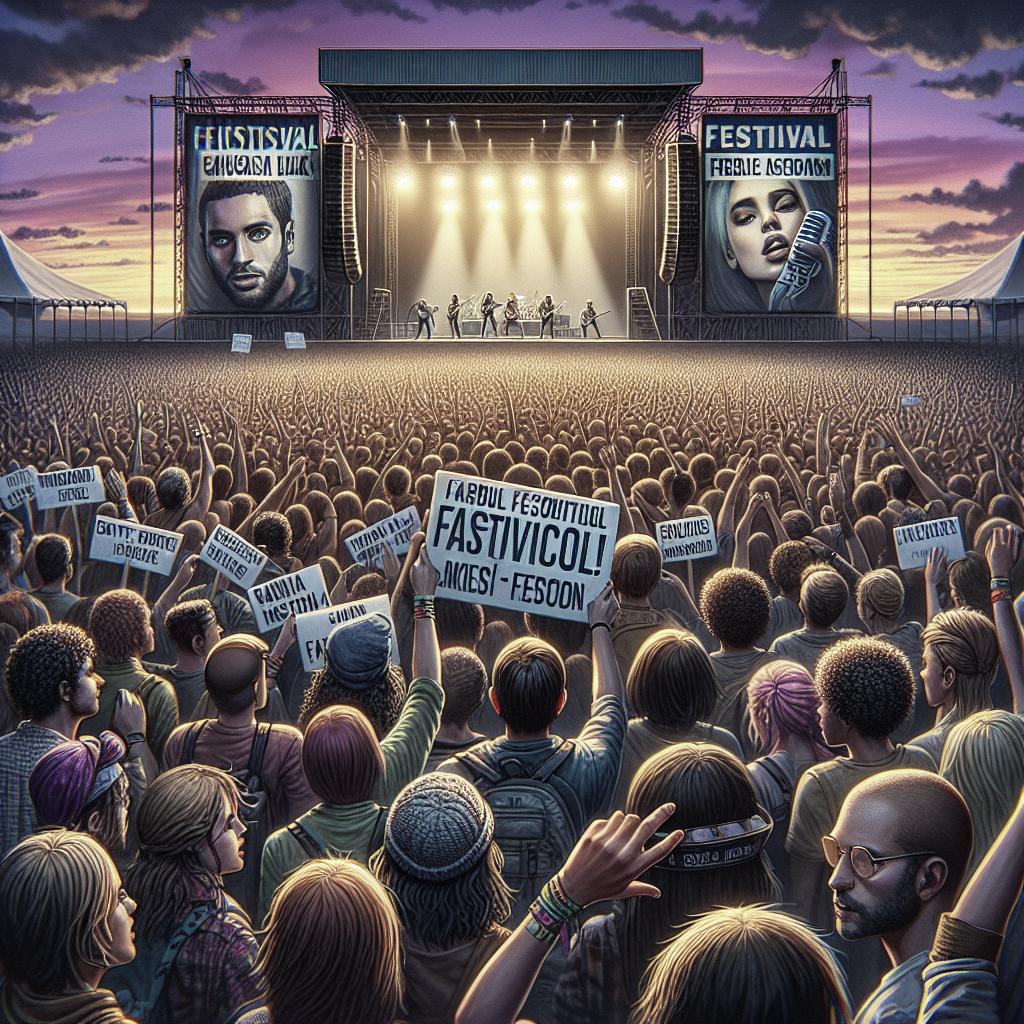<>
### Which Invited Artists Are Known for Their Stage Performances Art has a myriad of forms, and stage performances form an integral part of contemporary art. Invited artists known for their stage performances blur the lines between art, theater, and life through their compelling narratives and unique styles. This blog post explores the works and contributions of ten renowned artists who have left indelible marks on the world of performance art. From the conceptual and provocative Adrian Piper and the multimedia spectacle of Nick Cave to the politically charged actions of the Guerilla Girls, each artist brings a distinctive flavor to the art world. We’ll also delve into the groundbreaking works of stalwarts like Marina Abramovic and Yoko Ono, among others, offering you a comprehensive look at the power and diversity of stage performances in contemporary art.
1. Adrian Piper
Adrian Piper is a multifaceted artist whose work spans across various mediums, including performance art, drawing, video, and installation. Known for engaging with issues of race, identity, and social politics, Piper’s work often challenges conventional boundaries. One of Piper’s most iconic performance art pieces is “Catalysis” (1970-71), where she performed a series of public interventions in New York City. These performances ranged from walking through the city with a sign reading “Wet Paint” on her to stuffing a towel into her mouth and going about her day. These acts were designed to provoke disruption and draw attention to the everyday interactions between people and their environments. Piper’s work in performance art is intellectually rigorous and often provocative, encouraging viewers to confront their own beliefs and behaviors. Her contributions to performance art demonstrate the powerful role of art in societal reflection and change.
2. Nick Cave
Nick Cave, an American fabric sculptor and dancer, is renowned for his “Soundsuits” – colorful, bizarre, and playful costumes that conceal the wearer’s identity and transform them into multifunctional sculptures. Cave’s performances blend elements of dance, fashion, and fine art, creating dynamic and interactive experiences for audiences. Cave’s first Soundsuit, created in response to the Rodney King incident in 1991, was made from twigs, and since then, his work has included various materials such as buttons, beads, and synthetic hair. These suits make noise when worn, adding an auditory element to his performances and highlighting themes of identity, community, and social justice. His performances are not just visually stunning but also contextually rich, addressing themes of race, identity, and inequality. Nick Cave’s innovative approach to performance art continues to captivate audiences worldwide, making him an influential figure in contemporary art.
3. Wu Tsang
Wu Tsang is a Los Angeles-based filmmaker, performer, and visual artist known for her work that bridges social discourse with compelling narratives. Tsang’s performances often explore themes of gender, identity, and community, drawing from her own experiences as a transgender artist. One of Tsang’s notable performance pieces is “Mishima in Mexico,” where she collaborates with other performers to reenact scenes from Yukio Mishima’s play. Using her body and voice, Tsang creates an immersive experience for the audience, blending fiction and reality seamlessly. Her performance work is noted for its poetic, yet politically charged narrative style which makes audiences engage deeply with the subjects presented. Tsang’s innovative use of multimedia and her intersectional approach have established her as a significant voice in contemporary performance art.
4. Guerilla Girls
The Guerilla Girls, an anonymous group of feminist activist artists, are known for their bold and confrontational stage performances that address sexism and racism in the art world. Founded in 1985, their anonymity (members wear gorilla masks and use pseudonyms) allows them to speak freely about injustices without fear of personal backlash. Their performances often feature satirical humor and pointed critiques, challenging institutions and cultural norms. For example, their “Guerilla Girls Talk Back” (1989) performance critiqued the underrepresentation of women and artists of color in major museums, using statistics, humor, and pointed dialogues to raise awareness. By bringing activism into the art gallery, the Guerilla Girls have inspired countless artists and activists, proving the effectiveness of performance art as a tool for social change and empowerment. Their ongoing efforts continue to highlight the role of art in advocating for equality and justice.
5. Marina Abramović
Marina Abramović is often hailed as the “grandmother of performance art,” with a career spanning over four decades. Her performances are known for their intensity, often pushing the limits of her physical and mental endurance. One of her most famous performances, “The Artist is Present” (2010), took place at the Museum of Modern Art in New York. Abramović sat silent and still for eight hours a day, inviting museum visitors to sit opposite her and engage in a mutual gaze. This simple yet powerful act encouraged deep human connection and became a transformative experience for many participants. Abramović’s oeuvre frequently explores themes of pain, endurance, and the body as a medium. She continues to be a seminal figure in contemporary performance art, constantly challenging and redefining the boundaries of the form.
6. Ragnar Kjartansson
Icelandic artist Ragnar Kjartansson is known for his unique blend of performance art with music and theater, creating immersive and emotionally charged experiences. His works often incorporate repetition, duration, and live music, exploring themes of melancholy, nostalgia, and beauty. One of Kjartansson’s standout works is “The Visitors” (2012), a nine-channel video installation where musicians perform simultaneously in different rooms of an old mansion. The piece captures an intimate and spontaneous musical performance that is both deeply personal and collectively resonant. Another significant work, “A Lot of Sorrow” (2013), involved the band The National performing their song “Sorrow” continuously for six hours. This performance pushed the boundaries of endurance, both for the performers and the audience, creating an entrancing experience that enhances the emotional gravity of the song.
7. Ana Mendieta
Ana Mendieta, a Cuban-American artist, is renowned for her “earth-body” works, which integrate her body with natural landscapes. Her performance pieces often address themes of exile, identity, and connection to the earth. In her “Silueta” series (1973-1980), Mendieta created ephemeral figures in various landscapes, using natural materials such as flowers, leaves, and blood. These figures, often resembling her own body, symbolized her exploration of cultural displacement and her relationship with nature. Mendieta’s performances are powerful and evocative, blending ritualistic elements with personal and political statements. Her work continues to inspire and influence contemporary artists, highlighting the profound impact of performance art in expressing complex human experiences.
8. Yoko Ono
Yoko Ono, a pioneer in conceptual and performance art, has created a vast body of work that challenges and engages audiences. Her performances often involve audience participation, bridging the gap between artist and viewer. One of Ono’s most famous performance pieces is “Cut Piece” (1964), where audience members were invited to cut away pieces of her clothing while she remained passive and silent. This challenging piece explored themes of vulnerability, trust, and the power dynamics between artist and audience. Ono’s work frequently incorporates elements of peace and activism, reflecting her lifelong commitment to these ideals. Her innovative and participatory approach to performance art has left a lasting legacy, influencing countless artists across generations.
9. Tehching Hsieh
Taiwanese artist Tehching Hsieh is known for his endurance-based performance pieces, which often span long periods of time and explore themes of labor, time, and the limits of the human body. In his “One Year Performance” (1980-1981), also known as “Time Clock Piece,” Hsieh punched a time clock every hour for an entire year. This grueling performance highlighted the relentless passage of time and the physical and mental toll of such a commitment. Another significant work, “One Year Performance 1981-1982,” saw Hsieh living outside for a year without taking shelter. These extreme performances push the boundaries of endurance and challenge conventional notions of art and life.
10. Joseph Beuys
Joseph Beuys, a German artist, is well-known for his thought-provoking performance art pieces, often infused with political and social commentary. A leading figure in the Fluxus movement, Beuys’s work frequently involved symbolic actions and materials. One of his most notable performance pieces, “I Like America and America Likes Me” (1974), involved Beuys living for several days with a wild coyote in a New York gallery space. This performance explored themes of nature, culture, and the artist’s role in society. Beuys’s performances are characterized by their use of symbolic gestures and materials, often drawing from his own life experiences and political beliefs. His work continues to resonate with contemporary audiences, highlighting the enduring power of performance art to provoke thought and inspire change.
Relevant sources to learn more
For those interested in diving deeper into the works and contributions of these invited artists, here are some relevant sources: 1. Books : – “Performance Art: From Futurism to the Present” by RoseLee Goldberg – “100 Artists Who Shaped World Art” by Scholastic Art – “The Body in Pain: The Making and Unmaking of the World” by Elaine Scarry 2. Websites : – Guggenheim (https://www.guggenheim.org) – MoMA (https://www.moma.org) – Tate Modern (https://www.tate.org.uk) 3. Online Courses : – “Performance Art: A Complete Guide” on Udemy – “Contemporary Art Practices” on Coursera – “Introduction to Performance Art” on Skillshare ### Summary of Main Points | Artist | Key Works/Performances | Key Themes | |——————-|—————————————————–|————————————-| | Adrian Piper | “Catalysis” | Race, identity, social politics | | Nick Cave | “Soundsuits” | Identity, community, social justice | | Wu Tsang | “Mishima in Mexico” | Gender, identity, community | | Guerilla Girls | “Guerilla Girls Talk Back” | Sexism, racism, social justice | | Marina Abramović | “The Artist is Present” | Endurance, connection, human limits | | Ragnar Kjartansson| “The Visitors”, “A Lot of Sorrow” | Melancholy, nostalgia, beauty | | Ana Mendieta | “Silueta” | Exile, identity, nature | | Yoko Ono | “Cut Piece” | Vulnerability, power dynamics | | Tehching Hsieh | “One Year Performance (Time Clock Piece)” | Labor, time, endurance | | Joseph Beuys | “I Like America and America Likes Me” | Nature, culture, societal roles | Through exploring the lives and work of these influential artists, one gains a deeper appreciation for performance art’s varied and profound capacities to transform, challenge, and inspire.


